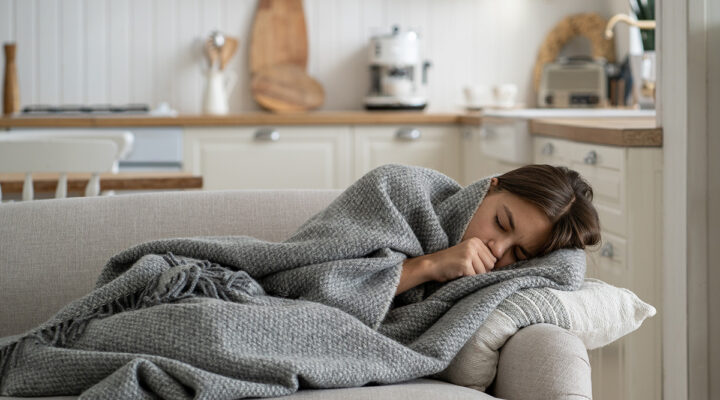How to Give Your Home Office a Mindful Makeover
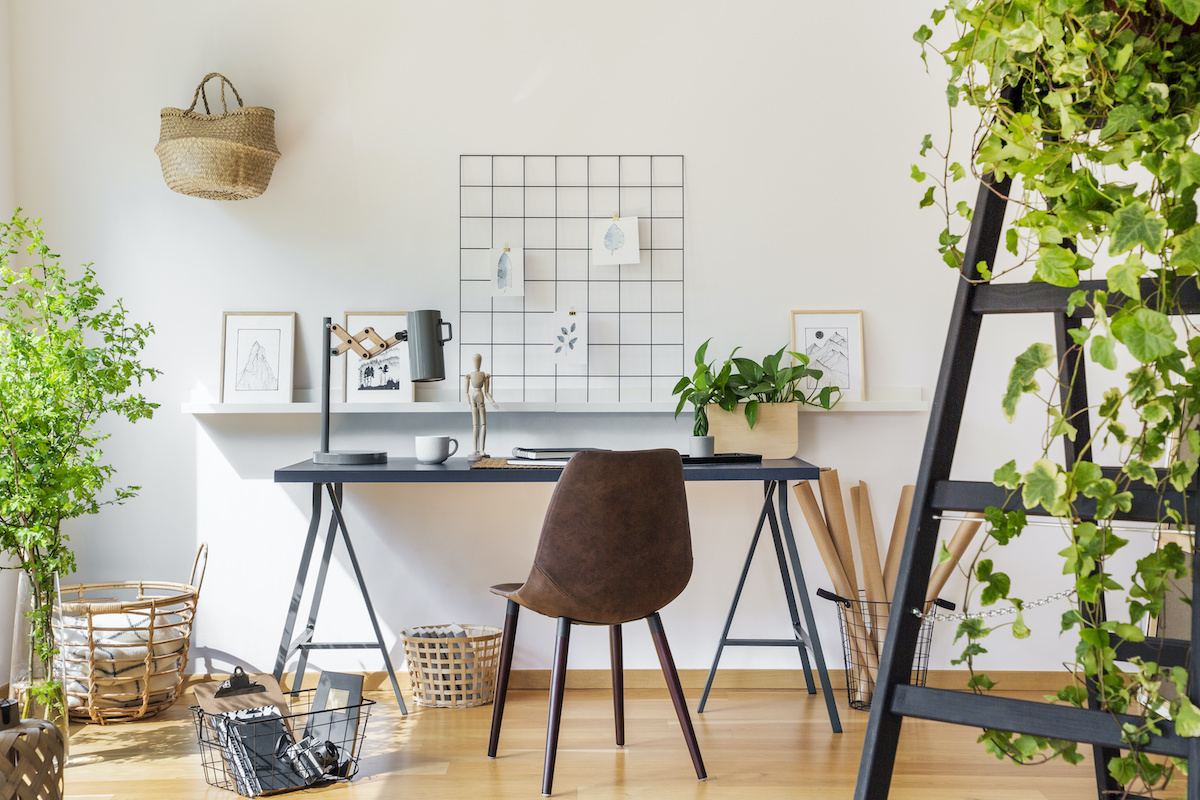
If you’re anything like us, then your home is your sanctuary, a safe space from which to unwind and enjoy the little things in life. But the safe space has been invaded. It’s called work – and because of the difficult situation we’re all finding ourselves in – you’re having to bring it out of the office and into your home.
Well, seen as we’ll likely be working from home a great deal more in the future we thought we could help give your (makeshift) home office a makeover – a space that will help you reach top productivity.
And so, we’ve asked digital editor at Homes & Gardens, Jennifer Ebert, for the following top tips on how to level up your current home office space, and turn it into a work-from-home sanctuary.
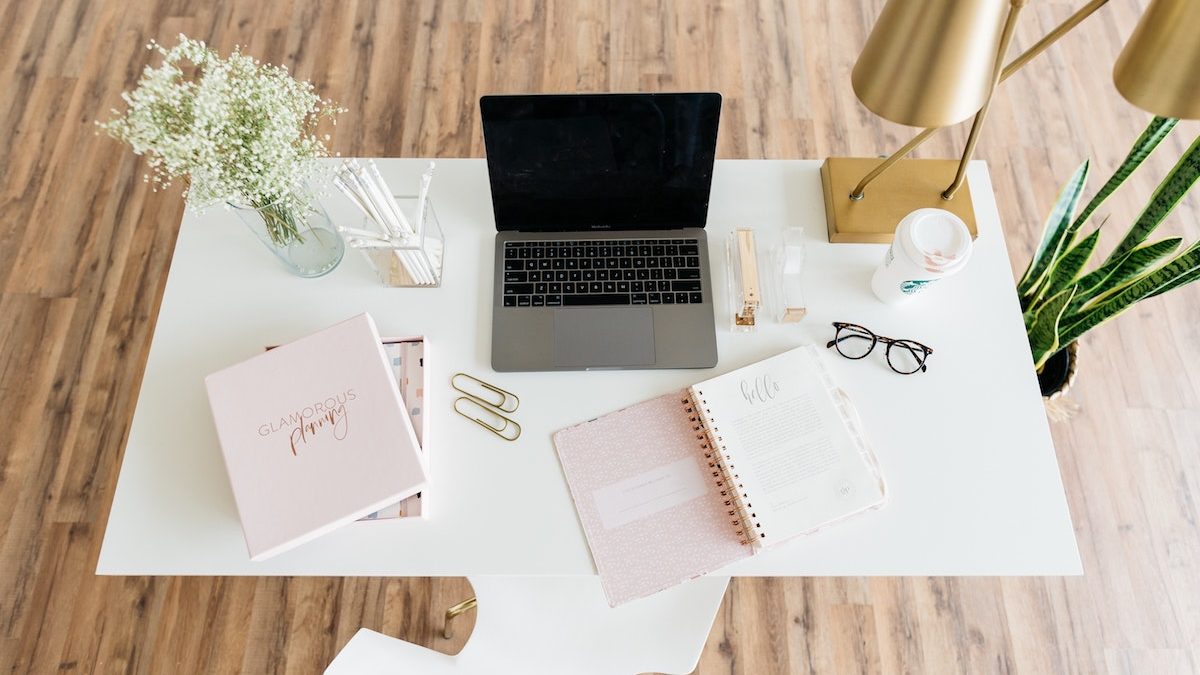
How To Make Your Home Office A More Productive Space?
Carve Out Your Territory
“Even if it’s just a corner of a room, create a designated area that is solely for home admin,” says Ebert. “It might be the space where you already have the computer. Put up open shelving and use magazine files and boxes to keep everything tidy. Box unit shelving works really well in an office.
“Bear in mind that the most unlikely of spaces can make excellent work stations, including redundant under stairs areas, wide landings, entrance halls, and semi partitioned areas of your regular living space.”
Get The Right Chair
“Top of the list [when making a home office space] should be a comfortable, ergonomic chair,” says Ebert. “One that allows you to rest both feet flat on the floor and access your workstation without having to raise your arms.”
In 2012, a study on over 300 participants found the majority reported an immediate reduction in self-reported musculoskeletal pain after switching to an ergonomic chair. So if you take care with your chair, your back will thank-you in the long run.
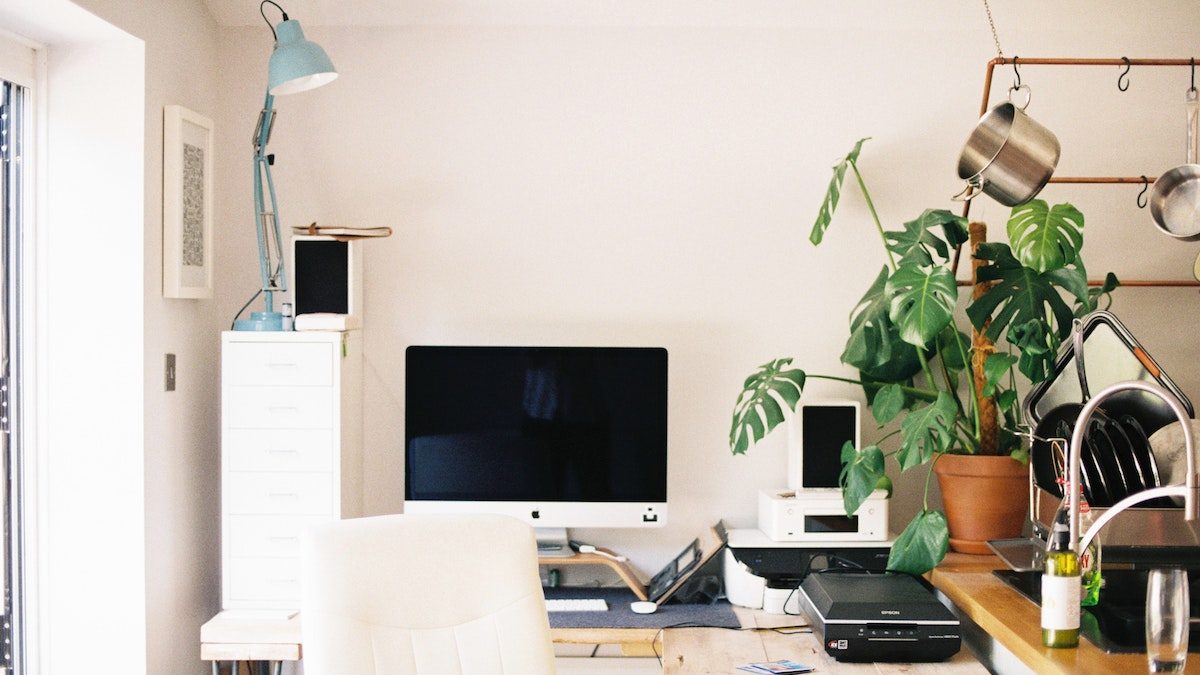
Pic credit: James Dear/The Lighting Judge
Don’t Work In The Dark
The phrase blue sky thinking was never more apt than when thinking about where to work.
A study from Cornell University found that workers seated by a window with natural light reported an 84 percent drop in symptoms of eyestrain, headaches and blurred vision.
“Good, efficient lighting is very important when working or concentrating,” agrees Ebert.
Now, if you’re house isn’t exactly blessed when it comes to natural light, you don’t have to put it on the market just yet – although you may have to get a bit more creative.
“Never let a bad lighting scheme or lack of natural light leave your home office in the dark,” says Ebert.”The brighter the better – so take into account that you might need to change or add in some extra lights if you’re not by a window. You can never light a room as efficiently as the sun, but judicious electric lighting can create an atmospheric background.”
Colour Code
Colour is also a great way to pretty your office up according to Ebert. “Create a colour scheme for a smarter, streamlined look. Choose magazine files, boxes, trays, anything that will be on show, all in the same colour. It will immediately make your home office look much neater. A mismatch of colours just looks messy and will not inspire people to be organized.”
Colour specialist Leatrice Eiseman has noted green as being the most emotionally calming colour. So if you want to stay cool as a cucumber ahead of your next deadline, a neat green and white colour palette may be the way to go.

Get Personal
“Train all members of the family to put any paperwork, mail, and notices in the home office area,” says Ebert. “Give each person a box or tray of their own. Label it and make sure they put any personal paperwork in it. That way everyone is responsible for their own stuff.”
Storage, Storage, Storage
“Adequate storage is vital when planning a home office,” notes Ebert. “Space is often at a premium in a home office, so plenty of shelving is a must. Freestanding furniture is another must for when you lack the budget or commitment to go bespoke.”
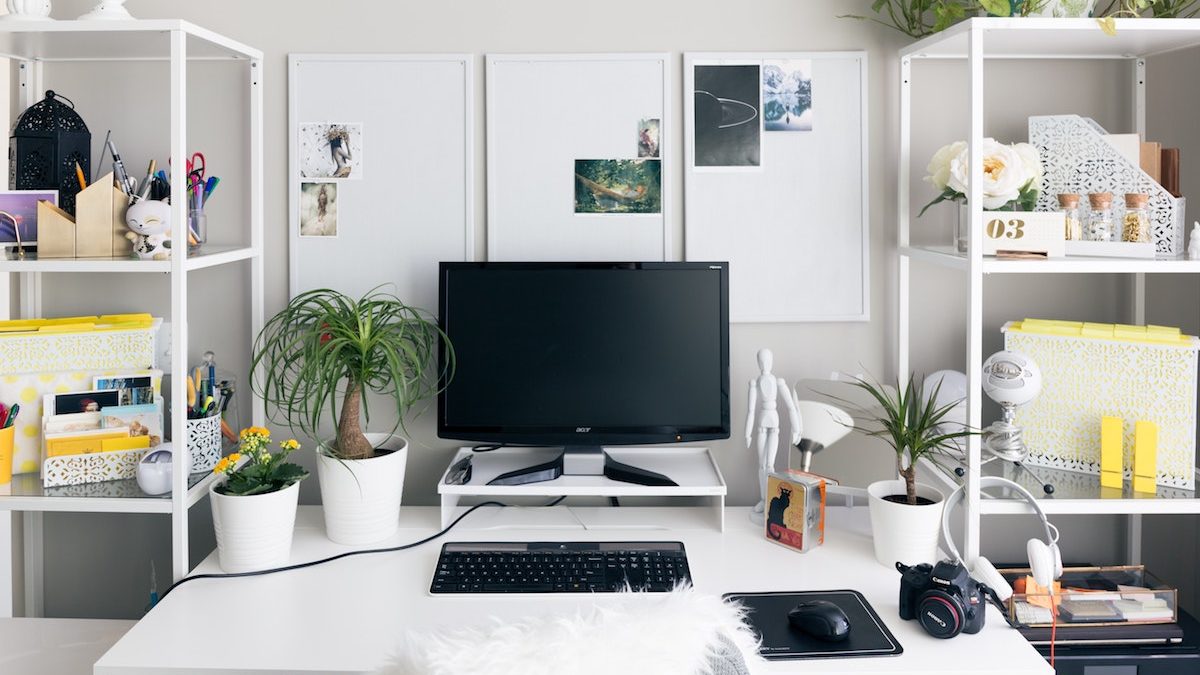
The Lion, The Witch And The Cupboard For Hiding Your Computer Leads
“If you have enough space, cupboards are really useful for hiding messy stuff like computer leads,” suggests Ebert, “as well as any other technology that can’t be stacked neatly.
“It also means it stays dust-free. A drawer unit for smaller items is essential for things that can easily be lost but beware of letting drawers get out of hand as all those paper clips, pens and memory sticks can all end up in an ungainly clump.
“Use drawer organizers or small plastic boxes to keep everything separate. Slim drawers are particularly good for stationery.”
The Socket To Appliance Ratio
“Make room for essentials such as laptop, phone, printer, and scanner, ensuring you have easy access to plenty of electrical sockets,” advises Ebert. “Hidden storage to house all these gadgets will also help to blend the office with the rest of your scheme.”
Tiny Desk Syndrome
And finally, make sure you give yourself enough wide-open desk space. It’s the last piece of the jigsaw, and the one people are most likely to overlook.
“Don’t forget to incorporate a desk with enough room for your computer or laptop and then also make sure there is adequate working space either side of it. You want all the items you use on a daily basis to be within arm’s reach of the desks seating position.”








